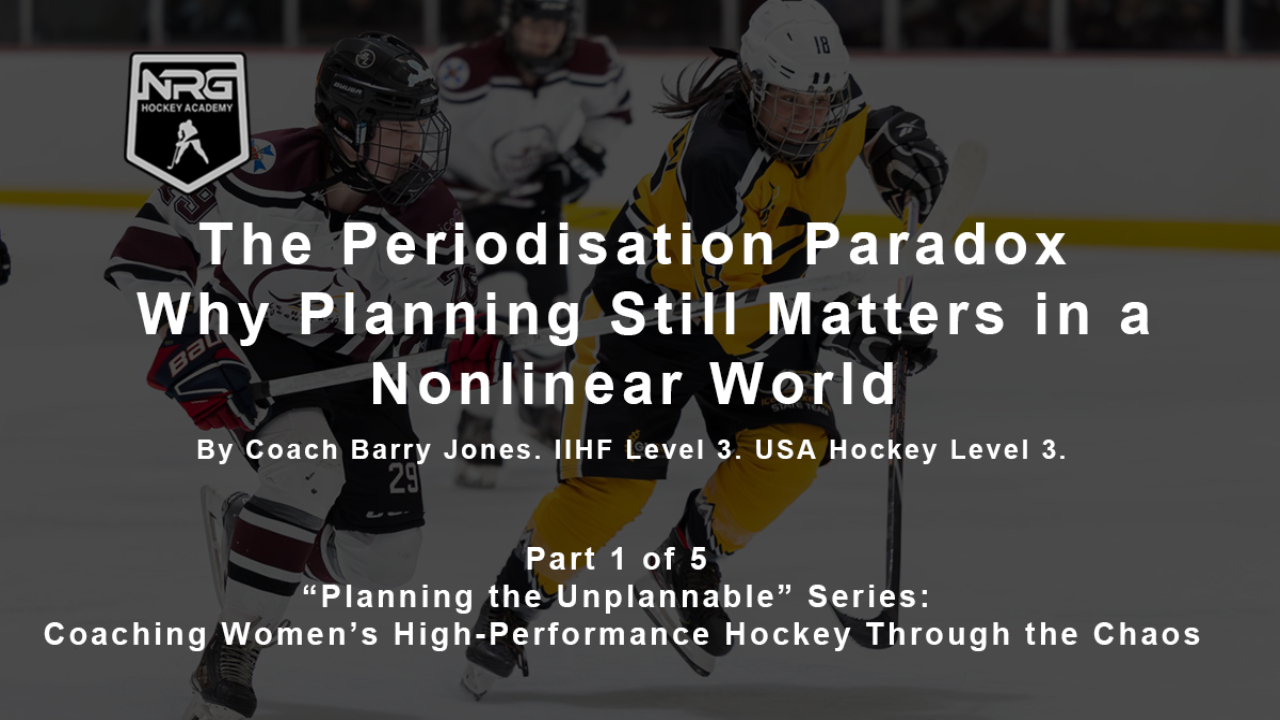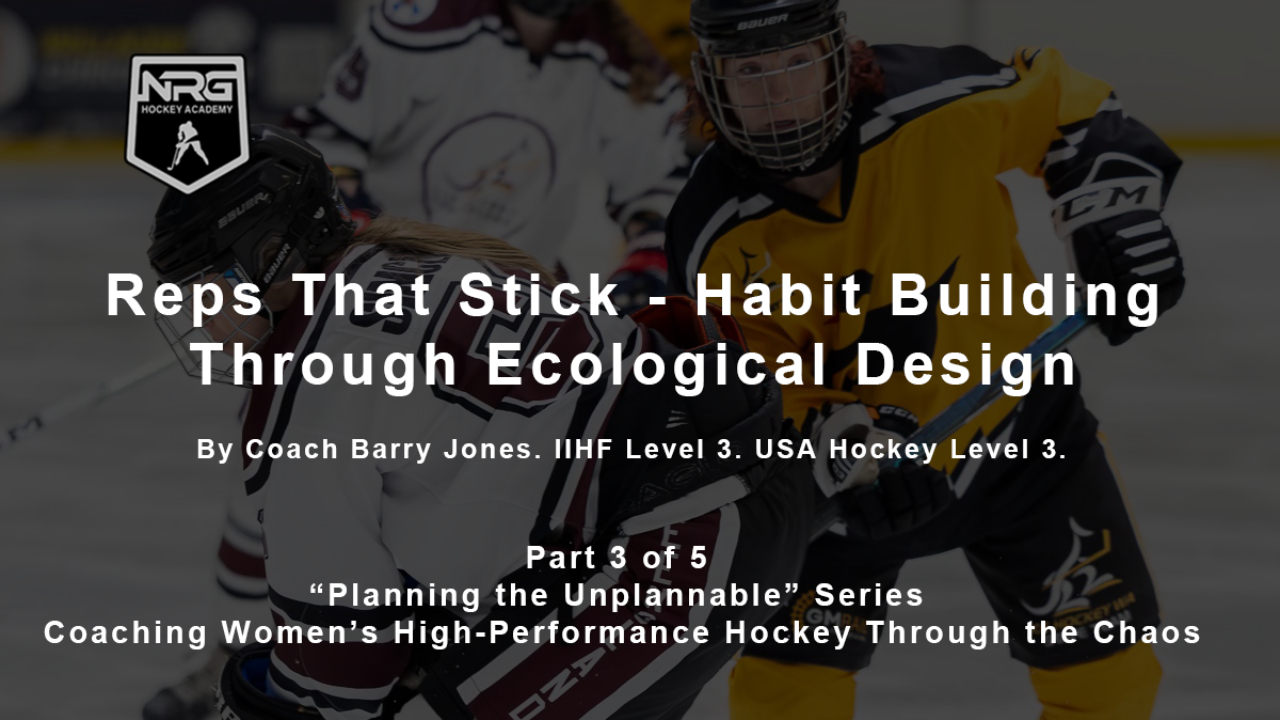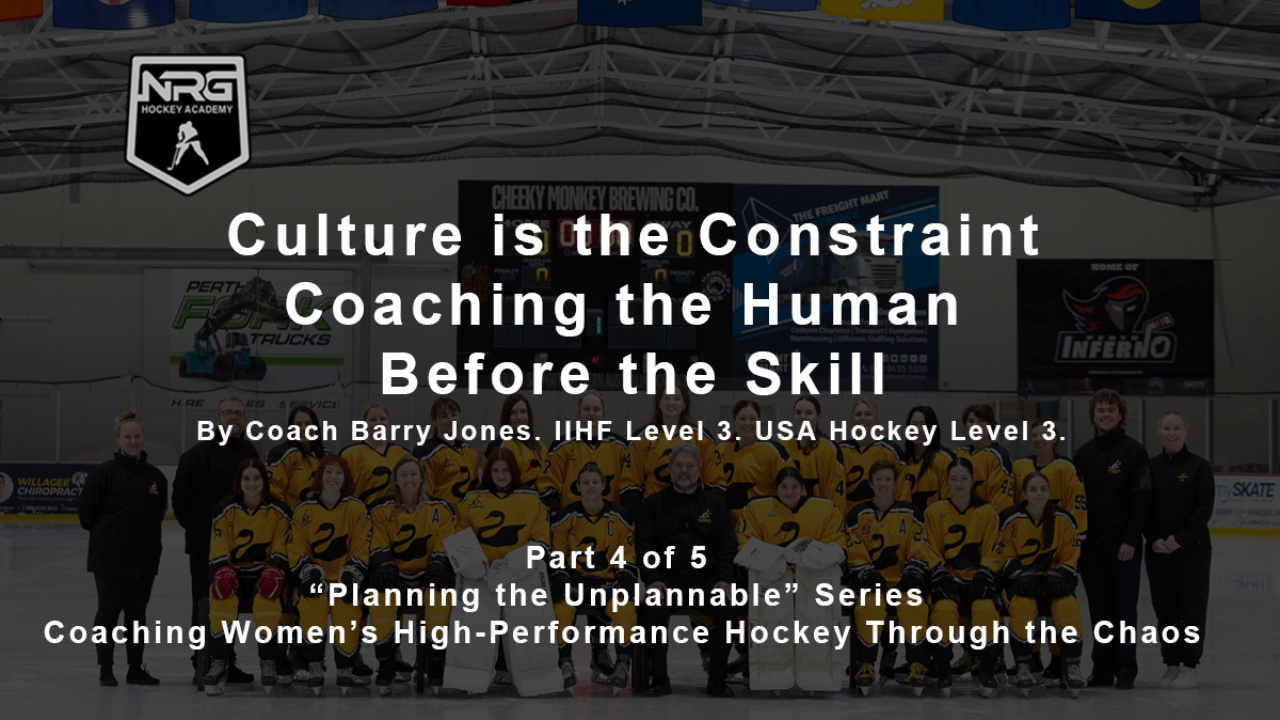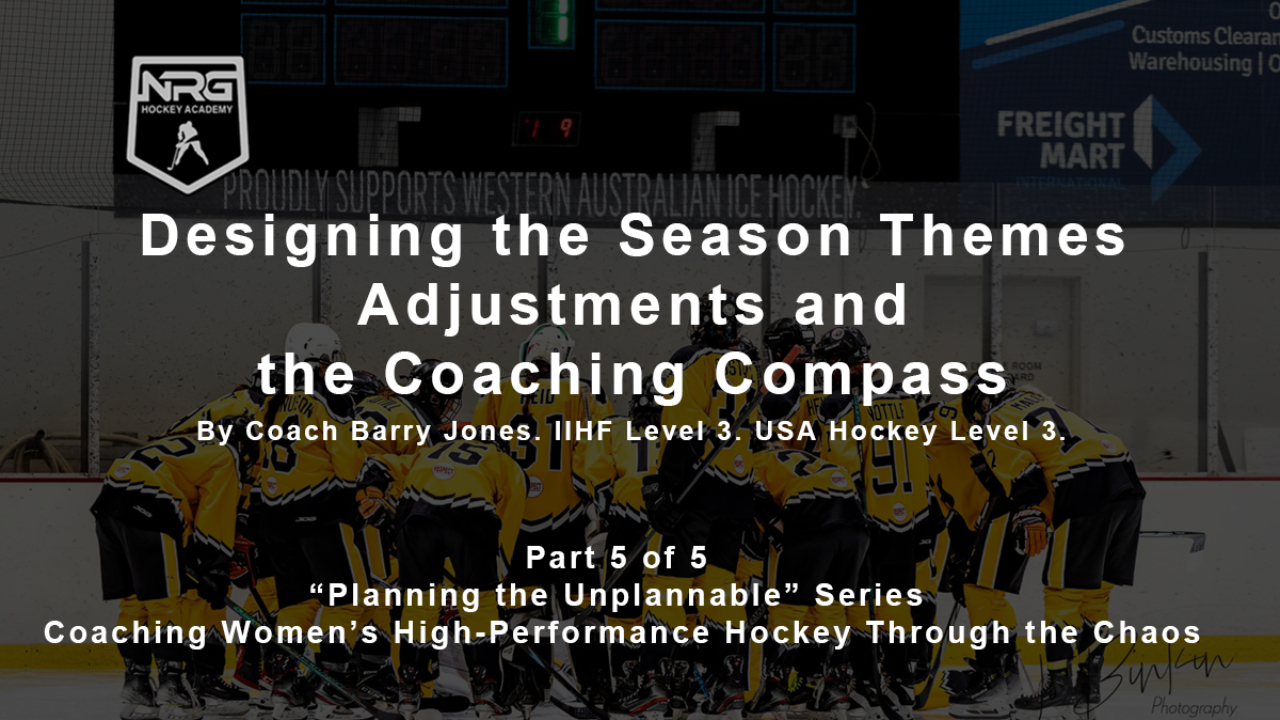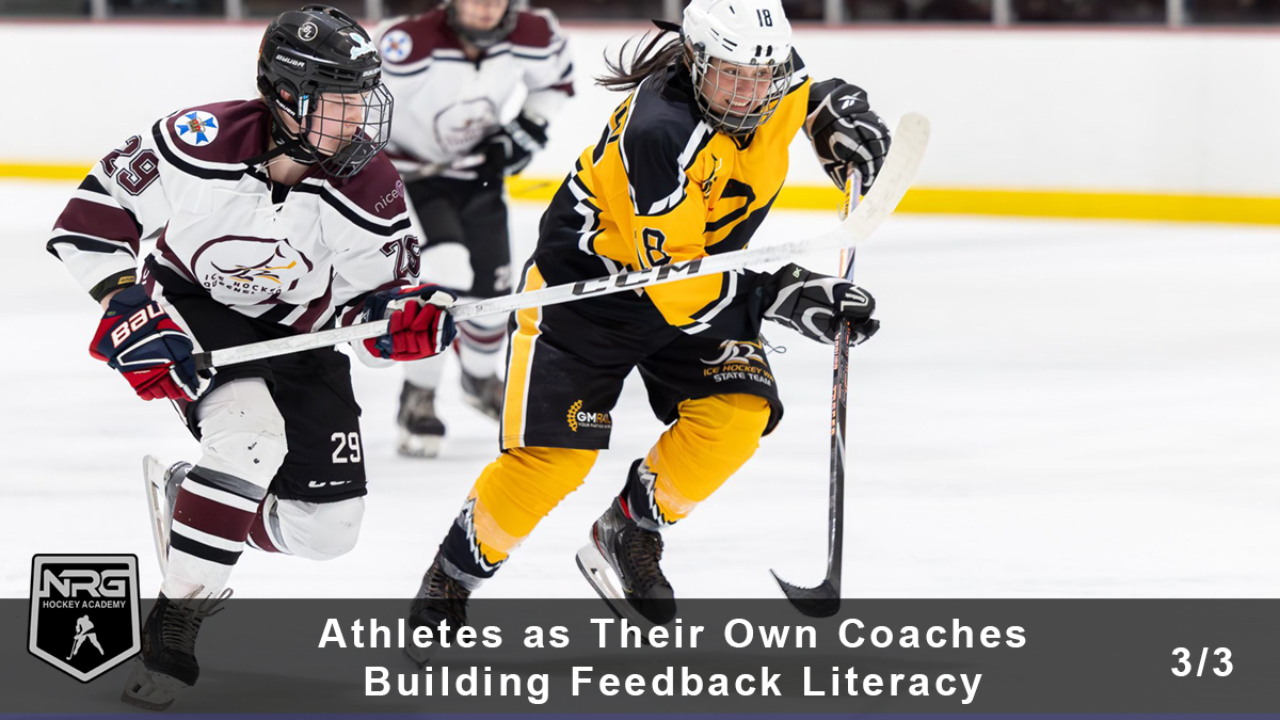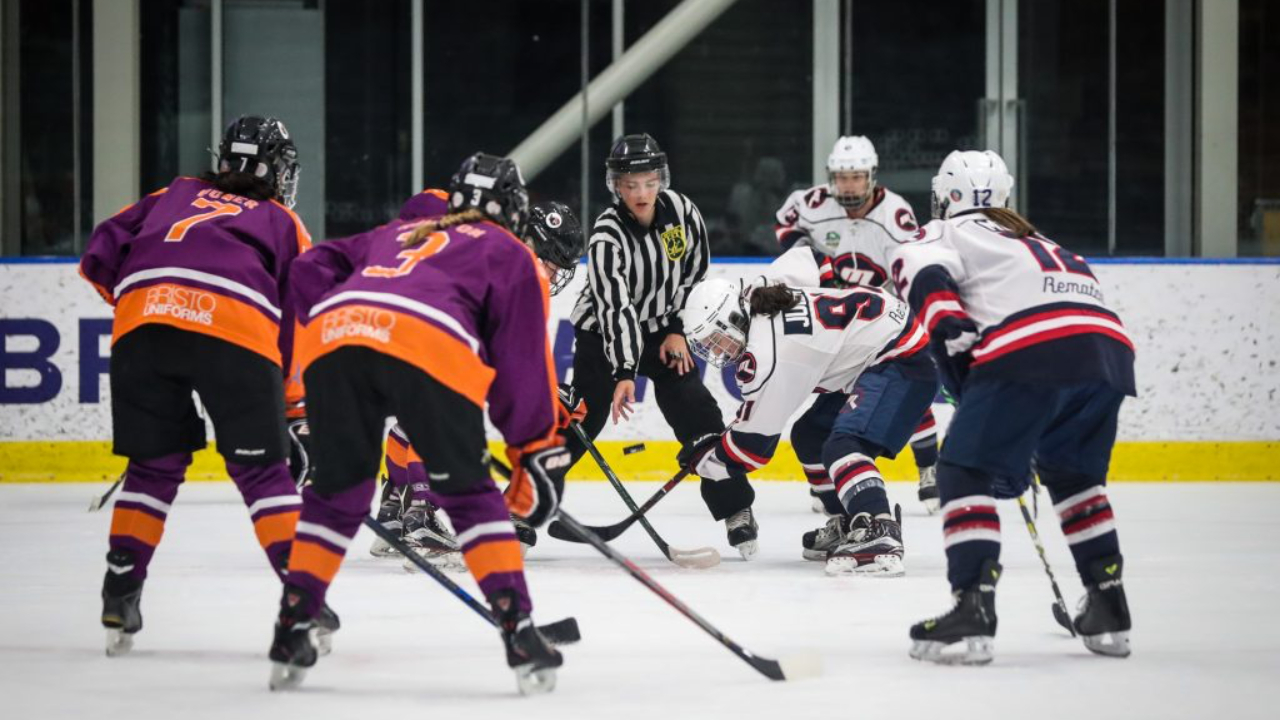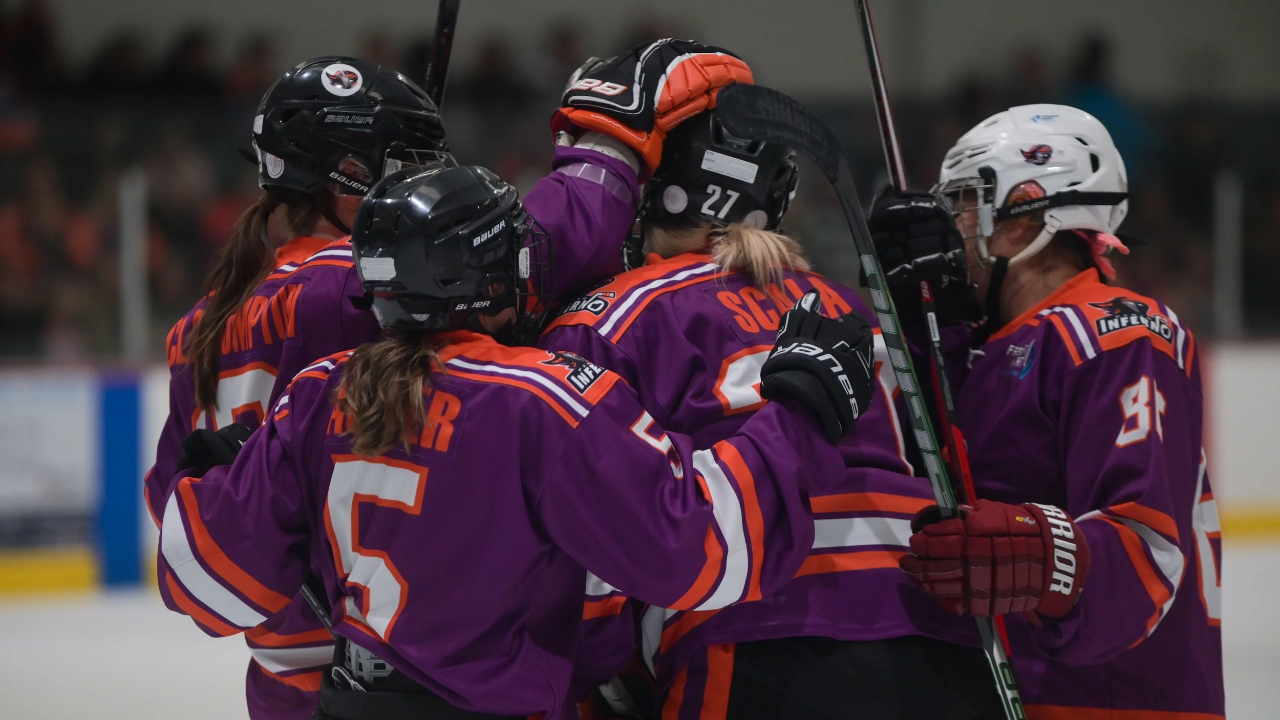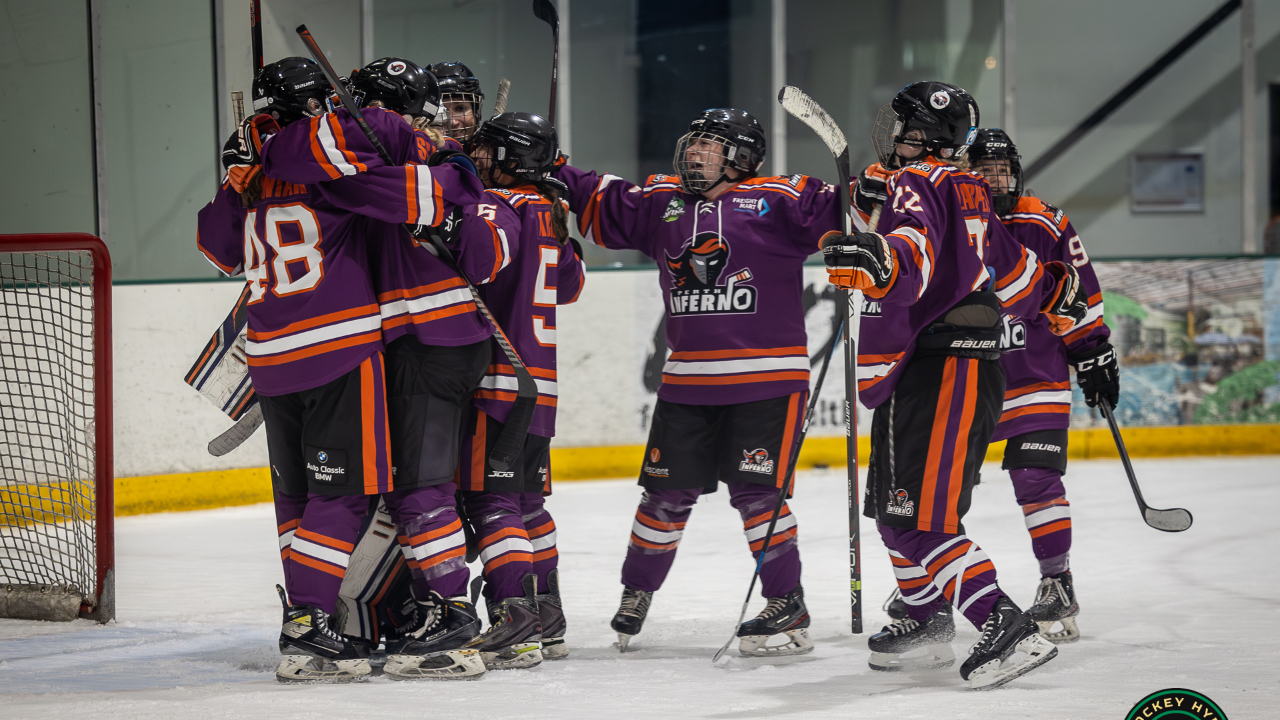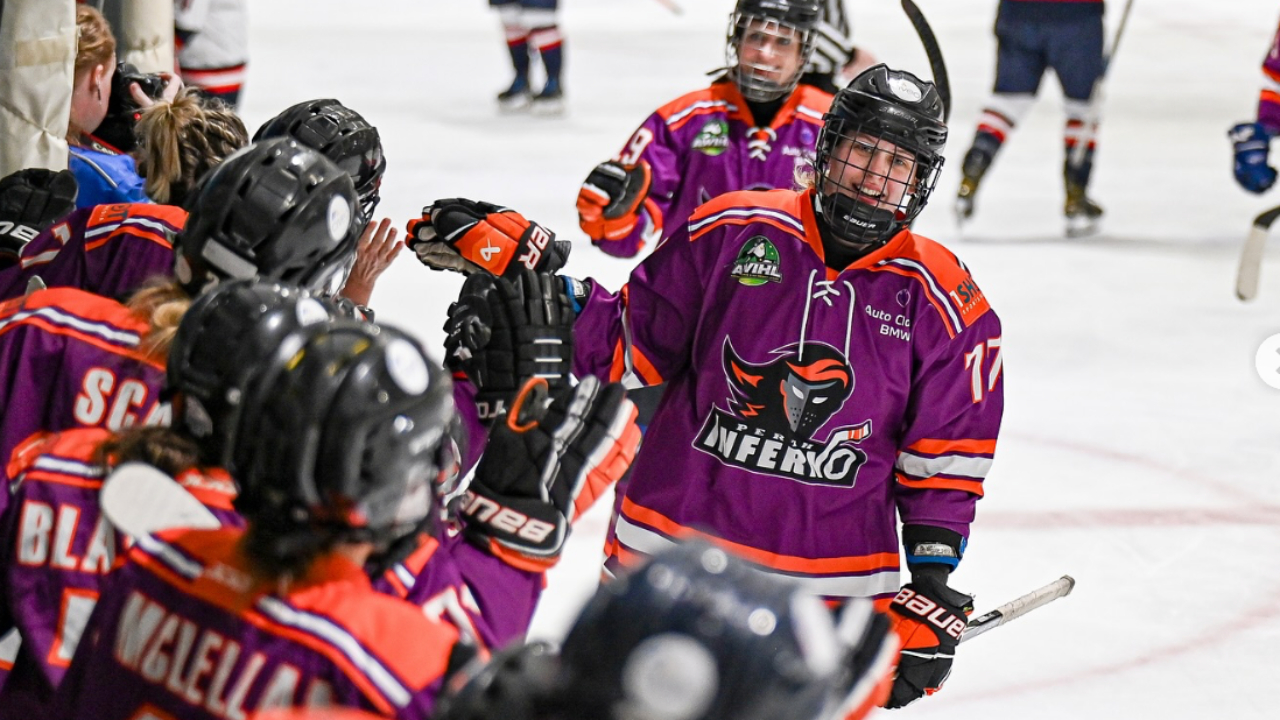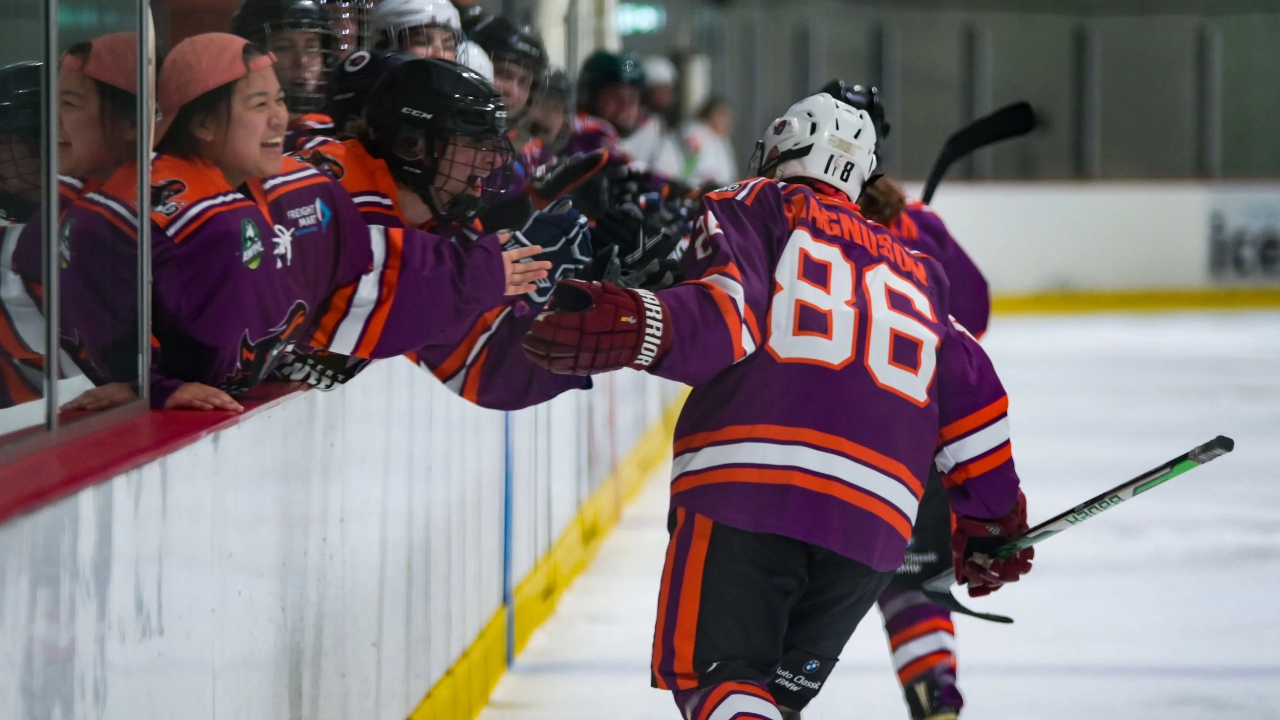
Inside My Madness: Coaching in a Nonlinear World
Article (2:5) Designing Without Deadlines: Building Adaptive Themes
By Coach Barry Jones – IIHF Level 3 High Performance | USA Hockey Level 3 Performance | Head Coach, Perth Inferno (AWIHL)
I stopped thinking in months and started thinking in problems. The moment I replaced time blocks with themes, my season stopped feeling like a plan and started feeling like a living organism.
From Blocks to Themes
Every coach loves structure. It gives us security. But the problem with block programming is that it assumes learning happens on schedule. Hockey rarely does.
In my early years, I had neat cycles: four weeks of puck movement, two weeks of forecheck, one week of systems. Players learned what the calendar said, not what the game needed.
When I finally scrapped those blocks, I built the year-round themes, not timelines. Themes are living anchors, ideas that evolve with the team. They give direction without dictating duration.
The Year as a Conversation, Not a Schedule
At Perth Inferno, our themes form a conversation that runs all season:
-
Breaking Pressure – creating options under stress.
-
Middle Lane Threat – attacking through space and timing.
-
Protect the House – defensive identity and trust.
-
Finishing Layers – second and third touch habits.
Each theme loops back when the team’s behaviour signals readiness for deeper layers. Breaking Pressure in October is not the same as Breaking Pressure in February, same language, different complexity.
Themes act like feedback loops. They stretch when needed, overlap when learning connects, and rest when fatigue or competition requires space.
When the Game Decides the Week
Fixed programs often decide in advance what athletes will learn next. Adaptive planning flips that relationship.
Each Monday, we start with what the game just told us. Film, performance data, and athlete reflections guide the next theme pulse. If our exits collapsed under forecheck pressure, we don’t “wait for transition week.” We attack that problem immediately.
Themes expand or contract based on evidence, not emotion. The environment becomes the planner.
Designing Within a Theme
Themes come alive through design, not description.
Within each theme, we build layered tasks that manipulate space, time, and pressure to reveal the behaviour we’re targeting. A Protect the House progression might look like:
-
3v3 net-front battle with deflection rules to teach body position.
-
Add a weak-side activation to connect coverage and support.
-
Finish with a transition constraint forcing re-entry decisions.
Each session evolves from the previous one. Players experience “repetition without repetition.” Learning becomes sticky because it is lived, not rehearsed.
Feedback Loops as Structure
The backbone of this system is constant feedback. Every session feeds the next through observation, player input, and simple metrics like puck retention rate or shot quality under pressure.
Those numbers don’t grade players; they guide environment design. When behaviours stabilise, we introduce a new disturbance, a smaller area, shorter time, or different scoring rule, to challenge adaptability again.
That cycle replaces the traditional block. Feedback is our periodisation.
Coach as Navigator, Not Programmer
This shift changed my role. I stopped acting like a programmer executing code and started behaving like a navigator steering a ship through shifting weather.
My job isn’t to force the map to fit; it’s to read the environment and adjust course. That mindset makes planning lighter but leadership deeper. It builds trust because players feel part of the navigation process.
Try This: The Three-Week Theme Experiment
If you want to test adaptive planning, try this.
Pick one theme relevant to your team, maybe Transition Support or Net-Front Habits.
-
Week 1: Design three tasks that express that theme.
-
Week 2: Use player feedback and game footage to modify constraints, not change topics.
-
Week 3: Revisit the same theme with added complexity or pressure.
At the end, ask your players what carried over to the game. You’ll find the learning sticks more deeply because it was adaptive, not prescriptive.
Reflection: Themes as Trust
Building adaptive themes taught me that freedom isn’t chaos, it’s trust.
When the environment becomes the teacher, the coach becomes the connector.
Planning stops being about control and starts being about rhythm, knowing when to stretch, when to stay, and when to let go.
Every theme you revisit becomes part of your team’s language. That’s how identity evolves, not through blocks, but through stories the team lives together.
What theme defines your team right now, and how might you evolve it without changing the calendar?
Read More
- 1 - The Beautiful Chaos: Why I Abandoned Fixed Periodisation
- 2 - Designing Without Deadlines: Building Adaptive Themes
- 3 - The Nonlinear Practice: Designing Sessions for Emergence
- 4 - The Beautiful Chaos: Why I Abandoned Fixed Periodisation
- 5 - Living the Madness: Culture, Trust, and the Adaptive Team
Author Bio
Coach Barry Jones is an IIHF Level 3 High Performance and USA Hockey Level 3 Performance coach, and the Head Coach of the Perth Inferno (AWIHL). His work explores nonlinear periodisation, ecological dynamics, and athlete-centred culture in women’s high-performance hockey.

